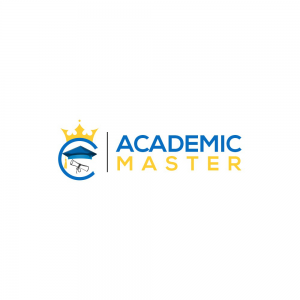How do MNCs firms come up with new strategies and procedures for their operations over local conditions such as emerging countries? How multinational firms can come up to withstand the pressures exerted by the HR strategies and the local conditions at large (Horwitz, 23). There are various theories of multinational management which tried to come up with the solutions over the various activities towards the current multinational corporations in various adaptations. Many scholars have tried to come up with some explanation on how to link the current MNCs with the local environment(Horwitz,40).Many scholars are on toes to explain globalization and its effects.
The essay tries to discuss the overall field of international management so as to come up with full comprehension of the HR strategies in MNCs over the competitive sectors within the field of operation.
In some cases despite the fact that many research bodies have undermined the HR strategy, there was a clear picture portrayed by many theories explaining the MNCs with the integration (Heikkila,46).Diffusion of HR management strategies is in some calculated subsidiaries to the MNCs which in many cases tends to be similar as in the normal Human Resource Management practices.HRM advocates for the high level of integration and also the standardization which cuts across all the MNCs so as to come up with the effective and efficient importance to the business organization.
In many situations, it is known that most of the MNCs have features such as the standardization, centralization, and basically the overall human resource management policies and decisions at large. The rate of diffusion of the MNCs to the HR practices has posed a huge challenge to organizations and in so doing giving rise to large differences in the organization. Factors such as the transfer of employment positions have initiated a debate in human resource management over the MNCs (Heikkilä, 75).Also the organization culture, and the results or the effects of political aspects between the subsidiaries and the centers of MNCs.
The essay will try to view the rate of diffusion of the human resource management strategies across all the subsidies of the MNCs ( Minbaeva et al, 65).The paper points out the pressures which may be incurred by the institution diversity over the transfer of the organizational practices in human resource management across all the subsidies of the MNCs (Minbaeva et al,160).There are factors which try to give a researched evidence over the diffusion of the HR strategies to the subsidies of the MNCs in the management of the organization. Some of the pressures between the human resource management strategies against the MNCs are discussed below;
Duality and HRM diffusion strategies
Taking into consideration the internal integration of HRM strategies in management and the decisions making process forms the vital part of the MNCs system (Pudelko and Anne-Wil, 122). This section tries to pinpoint the limitations of MNCs to cope with the new changes in human resource management.Some implementations and internalizations of the diffused spheres of human resource strategies need to be clearly identified and manipulated with the comprehensive approach so as to cater for the MNCs strategies as required in the global market (Pueblo and Anne-Wil, 230).
The scarcity of research into the diffusion of human resource management strategies.
On considering the duality and human resource management diffusion strategies, it gives a clear picture that is HRM strategies ought to diverse with the MNCs strategies (Cooke et al, 134).Currently, the HRM has literally advocated that some of the subsidiaries which were used before have been adopted in some strategies of the MNCs although in some cases not well explained (Baddar et al,430).Many scholars and also some of the human resource information centers have examined that most of the organizations have tried to adopt the MNCs technology as compared to the HRM strategies thus giving a challenge to HRM strategies (Baddar et al,500). In general, only a few knowledge which has been received from researchers indicating that to some extend HRM can result in conflicts and political behaviors which need skills to solve and tackle (Baddar et al, 640).
Methodological approach
This is based on research process whereby multiple units of analysis are carried out to give the diffusion of the MNCs strategies as compared to the HRM strategies and policies (Al et al, 130). It is through the methodological approach whereby one can have an overview of the transfusion of the traditional HRM and the global trading MNCs strategies within the organization (Al et al 219).Different variables give different approaches to this process. The differences and the pressures experienced in this process are well analyzed and they compared with the HRM strategies then their subsidiaries compared with the MNCs strategies. In many cases, the method has to forego the HRM strategies since some results try to show that HR transfer may be limited at the initial levels (Al et al, 310).Generally, the approach fails to explain the best alternative for the MNCs to apply for example managers and subordinates may neither use the system nor see anything valuable to acquire .This can help them to focus on most suitable approach so as to have access to the appropriate system.
Major factors for the human resource management diffusion
This section gives a clear picture whereby the internal consistency of the HRM forms the MNCs strategies ( Budhwar et al ,200).All the information, subsidiaries and also the centralized researches can indicate that MNCs forms a uniform collateral that tries to compete for the human resource management system which has failed to give the relevant results for the integration ( Budhwar et al,250).In MNCs there some of the examples which ought to exist so as to give a corporation to the individual subsidies and the results depending on the data available.
There are those key factors for the standardization of human resource management globally ( Boxall et al 121-122).However, the type of standardization of the HRM strategies such as recruitment or training of employee in the organization, it tends to reduce an integral part of MNCs and thus no effective integration between the two.
Generally, the essay as mentioned above it gives a clear picture of the roles of the corporate HR with the MNCs in business management (Boxall et al 209).On looking to the internalization strategies, most of the multinational business organizations they tend to possess various reasons to expand over the global by increasing their economies of the scale (Boxall et al,329).In a few cases, there are situations whereby the HRM strategies may oppose the working of the MNCs in the business administration (Boxall et al 510).The working range of the MNCs in sometimes it’s widely described and classified in different forms whereby at first there are ethnocentric strategies which try to control the subsidiaries in connection with the HRM strategies so as to necessitate the effective business operation.
Secondly, there are polycentric MNCs strategies which always its decentralized and its subsidiaries controls the local environments (Brewer etal, 21-22).Geocentric in many forms the cornerstone of the international strategies whereby its subsidiaries are almost adhered in almost all the spheres of the globe and thus giving appropriate strategies over the HRM strategies within the business administration (Brewer et al, 65). According to the above classifications, most of these subsidiaries in MNCs can have different roles on the evolvement of products, provision of various services in different fields, or the mandate of the MNCs to offer various products and services depending with the HRM strategies in the business administration (Brewer et al, 98-99).
To summarize up, the standardization of these HRM strategies across the globe in international operations try to come up stipulated boundaries between the MNCs policies and the HRM systems (Brewer et al, 190). There is a proficient alignment of the MNCs strategies over the HRM policies and in this manner; the extent of the standardized systems of MNCs dominates over the HRM privileges in any organization. All these factors form the basis that MNCs have strategic corporate structures and systems to dominate over the regulations and diffusion of the human resource strategies in all international spheres.
Works cited
Horwitz, Frank M. “Future HRM challenges for multinational firms in Eastern and Central Europe.” Human Resource Management Journal 21.4 (2011): 432-443.
Heikkilä, Jukka-Pekka. “An institutional theory perspective on e-HRM’s strategic potential in MNC subsidiaries.” The Journal of Strategic Information Systems 22.3 (2013): 238-251.
Minbaeva, Dana B., et al. “A retrospective on MNC knowledge transfer, subsidiary absorptive capacity, and HRM.” Journal of International Business Studies 45.1 (2014): 52-62.
Pudelko, Markus, and Anne-Wil Harzing. “The Golden Triangle for MNCs:: Standardization Towards Headquarters Practices, Standardization Towards Global Best Practices and Localization.” Organizational Dynamics 37.4 (2008): 394-404.
Cooke, Fang Lee, and Debi S. Saini. “(How) Does the HR strategy support an innovation-oriented business strategy? An investigation of institutional context and organizational practices in Indian firms.” Human Resource Management 49.3 (2010): 377-400.
Baddar Al-Hasan, Faten Z., Ross Brennan, and Phil James. “Transferring Western HRM practices to developing countries: The case of a privatized utility in Jordan.” Personnel Review 38.2 (2009): 104-123.
Al Ariss, Akram, Wayne F. Cascio, and Jaap Paauwe. “Talent management: Current theories and future research directions.” Journal of World Business 49.2 (2014): 173-179.
Budhwar, Pawan S., and Yaw A. Debrah, eds. Human resource management in developing countries. Routledge, 2013.
Boxall, Peter, and John Purcell. Strategy and human resource management. Palgrave Macmillan, 2011. Hartmann, Evi, Edda Feisel, and Holger Schober. “Talent management of western MNCs in China: Balancing global integration and local responsiveness.” Journal of World Business 45.2 (2010): 169-178.
Brewer, Peggy D., and Kristen L. Brewer. “Knowledge management, human resource management, and higher education: a theoretical model.” Journal of Education for Business 85.6 (2010): 330-335.





